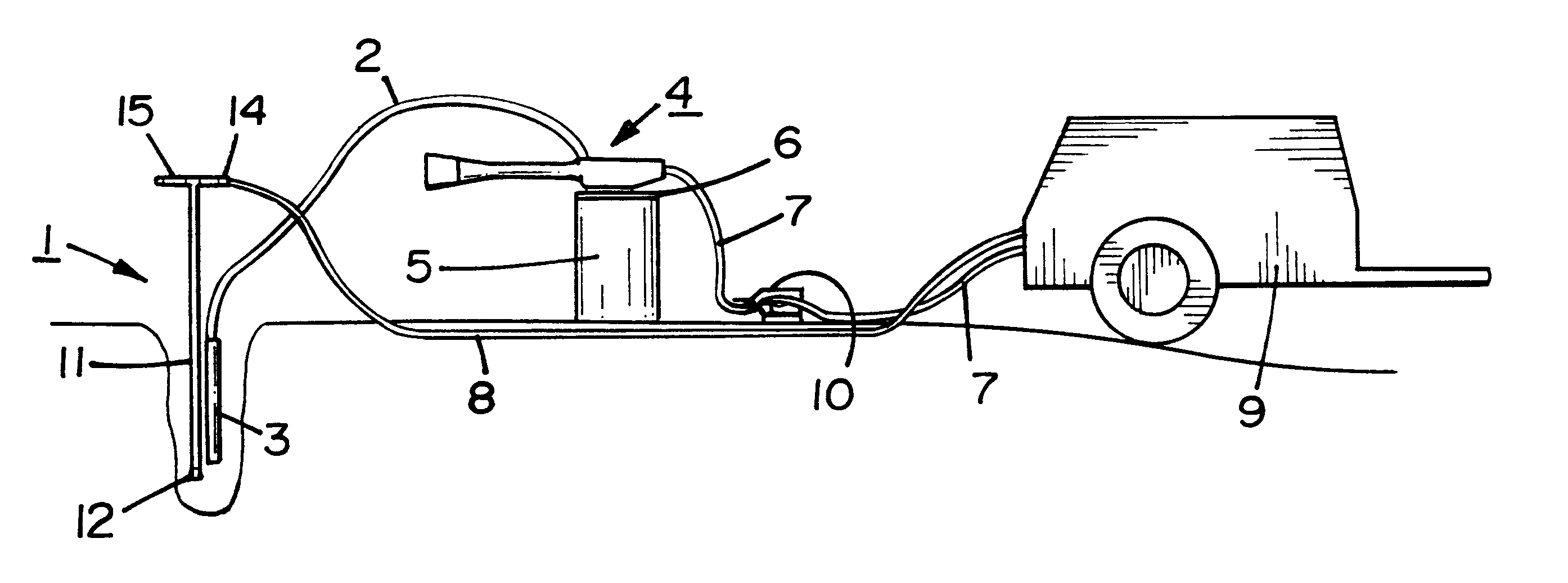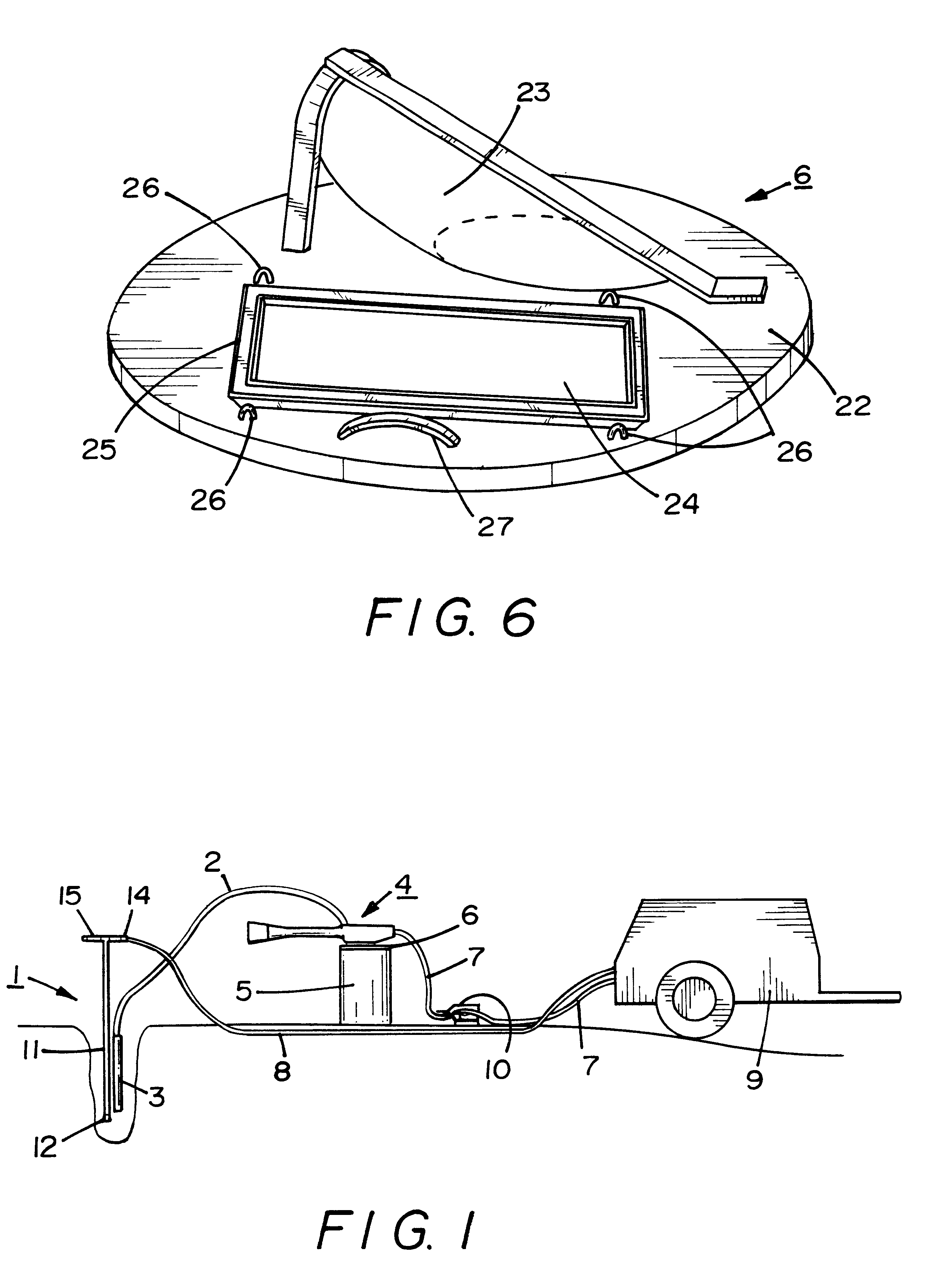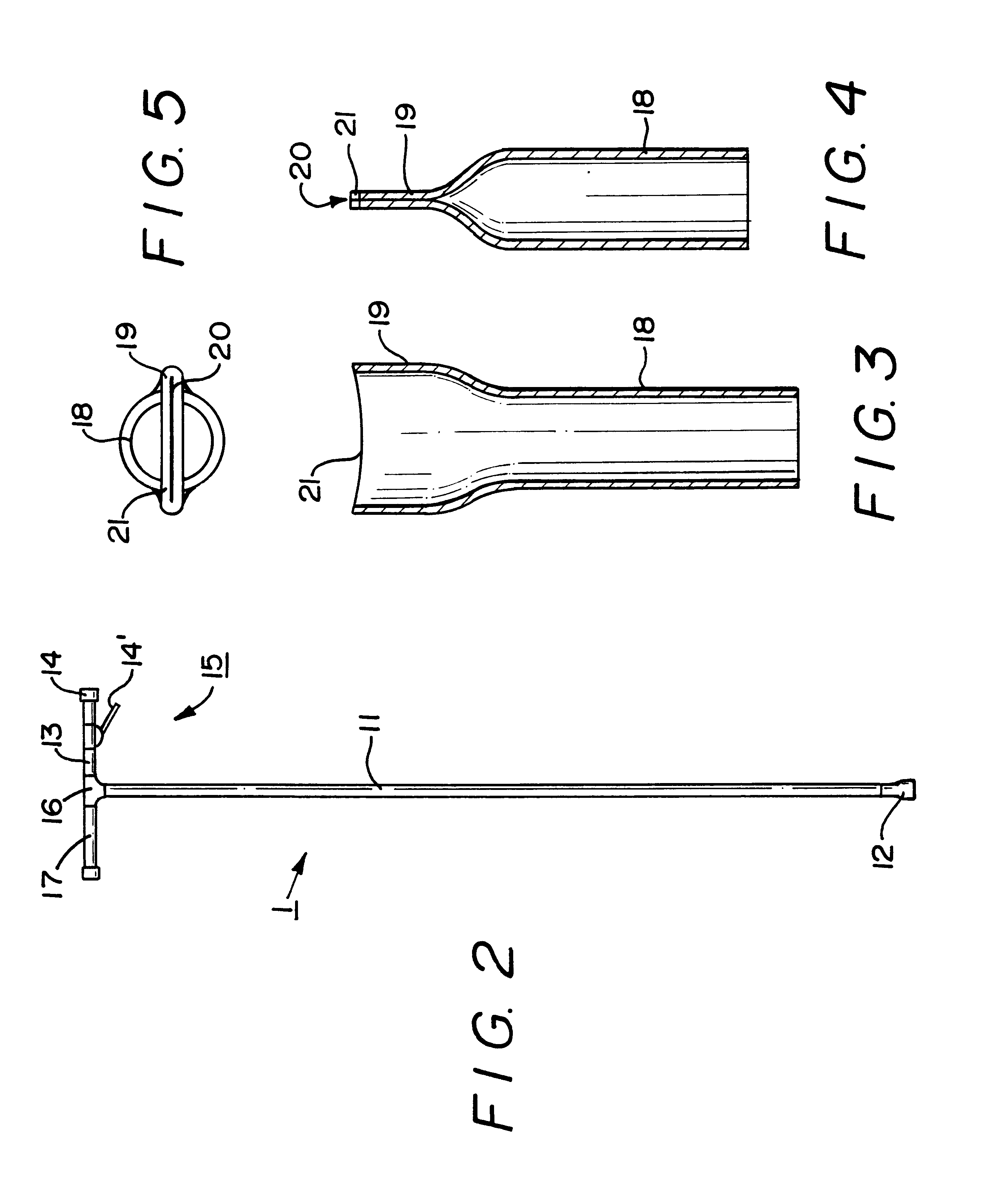Vacuum excavation apparatus having an improved air lance, air lance nozzle, and vacuum system including a multistage venturi ejector
a vacuum system and vacuum technology, applied in the field of vacuum excavation equipment, can solve the problems of local fracturing of soil, rapid release of expanding high pressure air trapped within the soil, and difficulty in maneuvering shovels, etc., to achieve the effect of reducing initial costs, reducing maintenance costs, and reducing maintenance costs
- Summary
- Abstract
- Description
- Claims
- Application Information
AI Technical Summary
Benefits of technology
Problems solved by technology
Method used
Image
Examples
Embodiment Construction
[0037]As shown in FIG. 1, the vacuum excavation system of the invention includes an air lance 1 arranged to direct air at supersonic speeds at a material to be excavated, and a material pickup hose 2 arranged to remove the loosened dirt from the excavation. The material pick-up hose 2 can be an ordinary hose, PVC pipe, or combinations of hoses and pipes, preferably having at least a 4″ diameter for soil excavation applications, although hose 2 is illustrated in FIG. 1 as being fitted with a PVC extension pipe or wand 3, pipe 3 being replaceable with longer or shorter extension pipes depending on the depth of the excavation.
[0038]The pickup hose is connected to a vacuum engine 4, described in greater detail below, which in turn is attached to an airtight material collection drum 5 via a drum head adapter 6, also described in more detail below. The air supply for the vacuum engine and the air supply for the air lance are both supplied by ¾″ standard compressed air hoses 7 and 8 from a...
PUM
 Login to View More
Login to View More Abstract
Description
Claims
Application Information
 Login to View More
Login to View More - R&D
- Intellectual Property
- Life Sciences
- Materials
- Tech Scout
- Unparalleled Data Quality
- Higher Quality Content
- 60% Fewer Hallucinations
Browse by: Latest US Patents, China's latest patents, Technical Efficacy Thesaurus, Application Domain, Technology Topic, Popular Technical Reports.
© 2025 PatSnap. All rights reserved.Legal|Privacy policy|Modern Slavery Act Transparency Statement|Sitemap|About US| Contact US: help@patsnap.com



